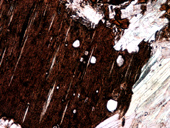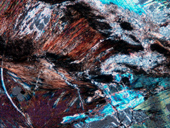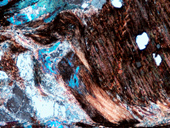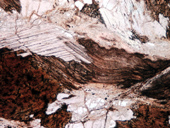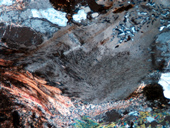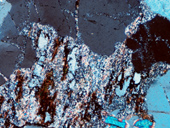Petrography and Deformation of Sundown Group Pelites: Eldee Structure |
Copyright 2004-2009 by Roberto
Weinberg.
All rights reserved. Unlimited
permission to copy or use is hereby granted for non-profit driven
enterprise subject to inclusion of this copyright notice and my World
Wide Web URL: http://users.monash.edu.au/~weinberg. I would very much
appreciate an email stating how this material will be used. Thanks, RW.
DISCLAIMER. The material in this website has not undegone the scrutiny of Monash University and does not conform to its corporate outlook. It is entirely based on a free-spritied, curiosity-driven research effort by the author, and therefore in no way expresses the official position of the University.
DISCLAIMER. The material in this website has not undegone the scrutiny of Monash University and does not conform to its corporate outlook. It is entirely based on a free-spritied, curiosity-driven research effort by the author, and therefore in no way expresses the official position of the University.
CLICK
ON ANY PHOTO FOR HIGH RESOLUTION
VERSION
Geological Map of the Elliptical Structures, NW Broken Hill Block
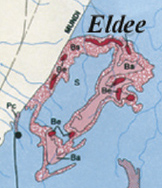 CLICK ON FIGURE FOR FULL MAP |
Early Deformation
| Early
deformation of the pelites of the Sundown Group is preserved in the
coarse grained pelites exposed
in the core of the elliptical Eldee Structure. This is characterized
by: a) coarse biotite grains with round quartz inclusions and intergrown with narrow bands of muscovite b) coarse quartz grains, cracked filled with fine-grained sericite c) fibrolite forming sheaths, and some larger well-formed sillimanite d) fine sericite and a fine low-birefringence mineral (qz) retrogression of K-feldspar grains which can occasionally be found as remains e) large well-formed muscovite, including fibrolite defining folds, and growing on top of sericitized K-feldspar and at contacts with biotite. The rock is sheared, but quartz in only cracked but with no undulose extinction, biotite is locally crenulated or sheared at the margins, muscovite is more seldom deformed, suggesting perhaps a later growth. All these features are illustrated below. All the photomicrographs are at the same scale and can be directly compared. |
Overprinting by later phase
| Early
deformation of Sundown pelites is overprinted by a later deformation
phase which becomes stronger at the external margins
of the Eldee Structure. The overprinting will be demonstrated here by
comparing the sample above with 3 samples from the external part of the
structure. In Sample EC04_2 the early structure is fully transposed and
refolded by a new fold phase not documented in the core of the
structure, while Samples EC04_4 and EC04_3 represent the intermediate
step, where the early structure and textures are still preserved and
recognizable. The comparison will be made on separate pages with higher
resolution images
of each particular texture described below. Click on the text to go to
the page. a) General texture b) Quartz c) Biotite d) Muscovite
|
